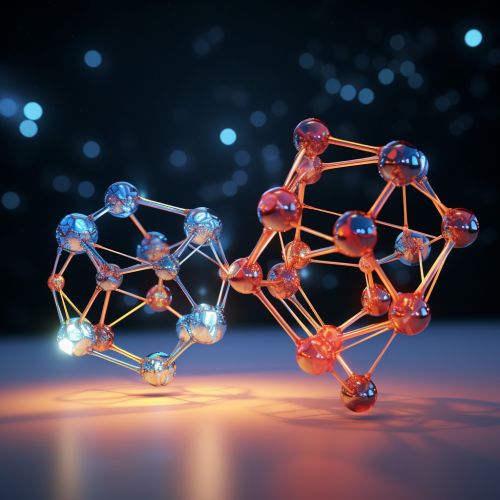Enantiomer
Overview
Enantiomers are a type of stereoisomer found in chemistry, specifically in organic chemistry. They are pairs of molecules that are mirror images of each other, but cannot be superimposed. This property is called chirality, and it is a fundamental concept in the study of organic molecules. Enantiomers have the same physical and chemical properties, but they interact differently with plane-polarized light and with other chiral compounds.


Chirality
Chirality is a property of a molecule that is not superimposable on its mirror image. In other words, the molecule and its mirror image are different in the same way that left and right hands are different. This is a crucial concept in understanding enantiomers. A molecule is chiral if it has an asymmetric carbon atom, which is a carbon atom that is bonded to four different groups. The presence of an asymmetric carbon atom leads to the formation of two different enantiomers.
Properties of Enantiomers
Enantiomers have the same physical and chemical properties, such as boiling point, melting point, and solubility. However, they differ in the way they interact with plane-polarized light and with other chiral compounds. When plane-polarized light passes through a solution of a single enantiomer, the plane of polarization is rotated. This phenomenon is known as optical rotation. The direction and magnitude of the rotation depends on the structure of the enantiomer. One enantiomer will rotate the plane of polarization to the right (dextrorotatory), while the other will rotate it to the left (levorotatory).
Importance in Biochemistry
Enantiomers play a crucial role in biochemistry and pharmacology. Many biological molecules, such as amino acids and sugars, are chiral. In addition, many drugs are chiral, and the two enantiomers can have different effects in the body. For example, one enantiomer of a drug might be beneficial, while the other might be harmful. This is why the synthesis of a specific enantiomer, rather than a mixture of enantiomers, is often important in drug development.
Synthesis of Enantiomers
The synthesis of a specific enantiomer is a major challenge in organic chemistry. Traditional chemical reactions produce a mixture of enantiomers, which is known as a racemic mixture. However, there are several strategies to obtain a single enantiomer. One approach is to use a chiral catalyst, which is a molecule that can selectively react with one enantiomer. Another approach is to use a chiral starting material, which is a molecule that already has the desired chirality.
